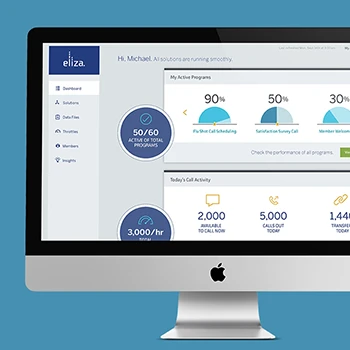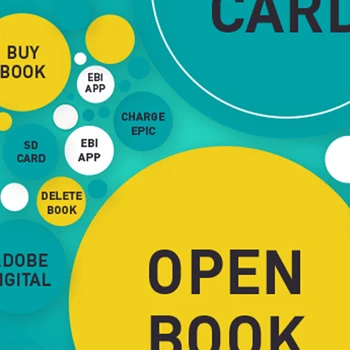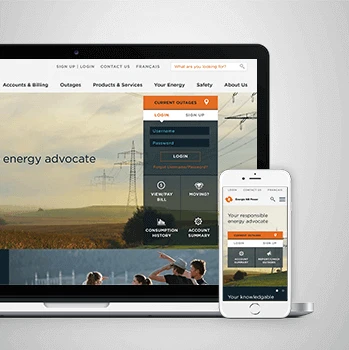What exactly does Akendi's product development service encompass beyond just coding?
Our product development goes far beyond traditional coding to deliver optimal experiences across all platforms and devices. Following the Experience Thinking build phase, we focus on experience specification, design support, and experience quality throughout construction and engineering. We create applications that connect effectively with customers and users through intentional experience design that spans front-end development, design system implementation, and user experience validation during development.
Tip: Think of development as experience creation rather than just feature building - this perspective ensures your final product delivers genuine user value.
How does your development approach differ from traditional software development services?
Traditional development often focuses on functional requirements and technical implementation. Our approach prioritizes user experience throughout the build phase with ongoing design support, frequent design reviews, and user experience testing during development. We maintain design intent from conception through launch, ensuring the final product delivers the intended experience quality. The Experience Thinking framework ensures development considers brand expression, content effectiveness, product usability, and service integration holistically.
Tip: Choose development partners who maintain design oversight throughout coding rather than treating design as a handoff phase before development begins.
What role does user testing play during your development process?
User experience testing happens at least once during the build phase because product performance from a code perspective influences the experience quality. We test with users during development to catch issues while design adjustments can still be made before market launch. This approach prevents the costly discovery of experience problems after deployment. Testing during development validates that technical implementation maintains the intended user experience quality.
Tip: Schedule user testing milestones during development cycles rather than only at project completion - early detection prevents expensive post-launch fixes.
How do you ensure design quality is maintained throughout the development cycle?
We provide ongoing detailed design support throughout construction, coding, and engineering phases, including additional elements like icons, customized design patterns, and partial page layouts where needed. Frequent check-ins and design reviews maintain intended quality levels in both waterfall and agile environments. Experience design quality requires attention to details - having brilliant design slightly reinterpreted in code typically reduces quality, so we maintain close collaboration throughout development.
Tip: Establish design review checkpoints at regular intervals during development rather than waiting for major milestones to ensure design integrity is preserved.
What platforms and technologies do you specialize in for product development?
We deliver products that are effective and fluent across all platforms, specializing in front-end web development, mobile applications, and responsive experiences that work seamlessly across devices. Our development capabilities include design system implementation, web style guides, and front-end development that preserves experience quality regardless of platform. Technology choices prioritize user experience quality and cross-platform consistency while leveraging each platform's specific strengths.
Tip: Prioritize platform-native experiences over trying to force identical interfaces across all devices - users expect platform-appropriate interactions.
How do you approach development for complex enterprise applications versus consumer products?
Enterprise development requires understanding organizational workflows, integration requirements, and user hierarchies while maintaining experience quality. Consumer product development focuses on individual user engagement, adoption patterns, and market positioning through superior user experiences. Both approaches benefit from Experience Thinking principles, but enterprise products need additional attention to service experience elements like training, support, and organizational change management that affect successful implementation.
Tip: For enterprise products, involve both end users and organizational stakeholders in development validation to ensure the solution works for individual users and organizational processes.
What does foresight design thinking bring to your development approach for future-ready products?
Foresight design in development means building products that anticipate future user behaviors, technology evolution, and market changes rather than just meeting current requirements. We consider emerging interaction patterns, evolving user expectations, and potential technology integrations that could impact your product's future relevance. This forward-looking approach helps create development architectures that remain adaptable as user needs and market conditions evolve over time.
Tip: Build development architectures that can adapt to future requirements rather than just solving current problems - this prevents costly rebuilds as your product evolves.
How do you integrate user feedback throughout the product development lifecycle?
We close the typical feedback gap by involving users as true stakeholders throughout development rather than only at the beginning and end. User involvement includes personas development, usage scenario validation, and iterative testing during development phases. This managed approach keeps development timelines on track while ensuring user needs remain central to all development decisions. Regular user feedback reduces the risk of building products that miss user expectations.
Tip: Plan user involvement activities into your development schedule from the start rather than treating them as add-ons that extend timelines.
What's your approach to agile development and iterative design?
Our iterative approach emphasizes creating, reviewing, and re-creating in ways that are lightweight and disposable, enabling faster learning and higher quality outcomes. We create early prototypes and wireframes without significant technology behind them to focus on user experience validation before development investment. This iterative process continues through development with frequent design reviews and user testing to maintain experience quality throughout build cycles.
Tip: Embrace throwaway prototypes and early concepts as learning tools rather than trying to preserve every design decision - iteration leads to better final outcomes.
How do you collaborate with existing internal development and product groups?
We work as collaborative partners with your existing development and product groups rather than replacing internal capabilities. Our experience specialists integrate with your workflows to provide design support, user experience validation, and development guidance that enhances your group's capabilities. Collaboration includes knowledge transfer, process integration, and methodology sharing that builds internal capabilities while delivering immediate project needs.
Tip: Establish clear collaboration protocols and communication channels early in the project to ensure smooth integration between external and internal capabilities.
What documentation and specifications do you provide to support development implementation?
Development specifications include annotated wireframes showing user-perspective content and function flows, coded visual pages capturing the product experience framework, and reusable design patterns for consistent implementation. We provide design style guides that formally capture visual frameworks and data visualizations, making experience design less dependent on original creators. Documentation focuses on preserving design intent from design phase through product launch.
Tip: Invest in thorough design documentation and style guides early - they save significant time and maintain quality consistency as your product scales.
How do you handle scope changes and feature evolution during development?
Scope changes are evaluated against user research insights and experience strategy to ensure additions align with user needs and business goals. We distinguish between features that enhance core user value and those that create complexity without user benefit. The Experience Thinking framework helps assess changes across brand consistency, content strategy, product usability, and service delivery impact. Change management maintains project momentum while ensuring modifications improve rather than compromise user experience quality.
Tip: Evaluate scope changes against user research findings rather than just stakeholder preferences - this prevents feature creep that dilutes user experience quality.
What's your approach to quality assurance and testing during development?
Quality assurance includes both technical testing and user experience validation throughout development cycles. We conduct design reviews to maintain experience quality, user testing to validate interaction functionality, and cross-platform testing to ensure consistent experiences. Quality assurance focuses on experience delivery rather than just bug detection, ensuring the final product meets both technical and user experience standards consistently across all platforms and use cases.
Tip: Include user experience metrics in your quality assurance criteria alongside technical performance measures - both are essential for product success.
How do you ensure accessibility and inclusive design during development implementation?
Accessibility integration happens throughout development rather than as a final compliance check. We implement inclusive design principles during coding, test with assistive technologies during development, and validate accessibility with diverse users throughout the build process. Accessibility considerations influence development architecture decisions to ensure inclusive access is built into the foundation rather than added superficially. This approach often reveals design improvements that benefit all users.
Tip: Build accessibility requirements into your development architecture from the beginning rather than trying to retrofit compliance after completion.
What front-end technologies and frameworks do you work with?
Our front-end development capabilities focus on creating effective user experiences across modern web technologies, responsive frameworks, and progressive web applications. We select technologies based on user experience requirements and platform optimization rather than following technology trends. Development choices prioritize performance, accessibility, and user experience quality while ensuring maintainability and scalability for future growth. Technology decisions always serve user experience goals rather than technical novelty.
Tip: Choose development technologies based on user experience requirements and business goals rather than just current technology trends or developer preferences.
How do you approach responsive design and multi-device development?
Responsive development ensures user experiences work effectively across device sizes and interaction contexts while maintaining core functionality and user value. We develop adaptive experiences that leverage each platform's strengths rather than forcing identical interfaces across all devices. Cross-device testing validates interaction patterns, performance characteristics, and experience consistency. The approach balances design system consistency with platform-specific optimization for optimal user experiences.
Tip: Test responsive experiences on actual devices throughout development rather than relying only on browser simulation tools - real-world usage reveals interaction issues that simulations miss.
What's your approach to performance optimization and user experience?
Performance optimization prioritizes user experience quality through fast loading times, smooth interactions, and responsive feedback that maintains user engagement. We optimize for perceived performance alongside actual performance, ensuring users feel the application is responsive even during processing. Performance considerations influence development architecture decisions from the beginning rather than being retrofitted after development. User experience testing validates that performance improvements translate to better user satisfaction.
Tip: Focus performance optimization on user-perceived speed and interaction responsiveness rather than just technical benchmarks - user perception determines satisfaction.
How do you handle integration with existing systems and third-party services?
System integration focuses on user experience continuity across different platforms and services rather than just technical connectivity. We design integration points that maintain user workflow coherence, handle errors gracefully, and provide appropriate feedback during system communications. Integration testing validates user experience quality during data exchanges, service interruptions, and edge cases that affect user task completion. The approach ensures integrations enhance rather than complicate user experiences.
Tip: Design integration experiences for users rather than just technical connectivity - smooth user workflows matter more than perfect technical integration.
What's your approach to data security and privacy during development?
Security implementation balances robust protection with user experience quality, ensuring security measures don't create unnecessary friction for legitimate users. We integrate privacy-by-design principles that protect user data while maintaining usability and transparency about data handling practices. Security considerations influence user experience design for authentication, data entry, and privacy controls. The approach creates security that users understand and trust rather than security that frustrates users.
Tip: Design security features with user experience in mind - security that's difficult to use often gets bypassed or abandoned by users.
How do you approach API development and data architecture for user-facing products?
API development prioritizes user experience requirements through fast response times, reliable data availability, and graceful error handling that maintains user workflow continuity. We design data architectures that support user task completion efficiently while providing feedback during processing delays. API design considers user mental models and workflow patterns rather than just technical efficiency. Data structure decisions support user interface requirements and future experience enhancement possibilities.
Tip: Design APIs with user experience requirements in mind rather than just technical efficiency - user-centered APIs enable better interface experiences.
What's your experience with emerging technologies like AI integration and intelligent features?
AI integration focuses on enhancing user experiences through intelligent assistance that feels helpful rather than intrusive or confusing. We develop AI features that respect user mental models, provide appropriate transparency about automated decisions, and maintain user control over important choices. AI implementation includes user testing to validate that intelligent features actually improve user task completion and satisfaction. The approach ensures AI serves user goals rather than showcasing technical capabilities.
Tip: Test AI features with real users to validate that artificial intelligence actually improves user experiences rather than just demonstrating technical sophistication.
How do you approach design system development and implementation during product development?
Design system development creates reusable components and patterns that maintain experience consistency while enabling efficient development scaling. We build systems that capture visual frameworks, interaction patterns, and experience principles that work across multiple products and platforms. Design systems evolve through product development, with new patterns emerging from specific implementation needs. The systems serve both development efficiency and user experience consistency goals simultaneously.
Tip: Start design system development with core components needed for immediate development while planning for system growth as new patterns emerge from product needs.
What's the relationship between design systems and Experience Thinking in your development approach?
Experience Thinking ensures design systems support holistic user experiences across brand expression, content presentation, product functionality, and service delivery rather than just interface consistency. Design systems become experience systems that encode brand strategy, interaction principles, and service design patterns alongside visual components. This approach transforms design systems from efficiency tools into strategic experience platforms that enable innovation while maintaining coherence across all user touchpoints.
Tip: Extend design systems beyond visual components to include experience principles and interaction patterns that support your complete user experience strategy.
How do you ensure design system adoption and consistency during development?
Design system adoption requires development processes that make using system components easier than creating custom solutions. We provide clear documentation, implementation examples, and development support that encourages system usage. Adoption tracking and feedback collection help identify system gaps and improvement opportunities. The approach balances system consistency with flexibility for unique user experience requirements that may require system extension.
Tip: Make design system components easier to use than custom alternatives - convenience drives adoption more effectively than mandates or documentation alone.
What's your approach to evolving and maintaining design systems over time?
Design system evolution balances stability for existing implementations with growth to support new user experience requirements. We establish governance processes that evaluate system changes against user experience impact and development efficiency. System maintenance includes regular audits, user feedback integration, and performance optimization. Evolution planning considers future experience directions and technology changes that might require system adaptation.
Tip: Plan design system evolution with versioning strategies that allow gradual updates without disrupting existing product implementations.
How do design systems support cross-platform development and user experience consistency?
Cross-platform design systems maintain experience consistency while respecting platform-specific interaction patterns and technical constraints. We develop system approaches that work across web, mobile, and emerging interfaces while preserving coherent experience principles. Platform adaptation focuses on optimizing user experiences for each context rather than forcing identical implementations. System flexibility enables platform-appropriate experiences within consistent design frameworks.
Tip: Design cross-platform systems around experience principles and user goals rather than trying to achieve identical visual implementation across all platforms.
What role do design systems play in development efficiency and scalability?
Design systems accelerate development through reusable components, consistent patterns, and reduced decision-making overhead during implementation. System efficiency comes from eliminating repeated design and development work while maintaining experience quality. Scalability benefits include faster onboarding for new developers, consistent output across different implementation groups, and easier maintenance as products grow. Development efficiency serves user experience quality by enabling more time for user testing and experience refinement.
Tip: Measure design system success through both development efficiency gains and user experience quality improvements rather than just component usage statistics.
How do you handle design system customization and brand-specific requirements?
Brand-specific customization ensures design systems express organizational identity and values while maintaining usability and accessibility standards. We develop system architectures that separate brand expression from functional patterns, enabling customization without compromising user experience quality. Customization approaches balance brand uniqueness with proven interaction patterns that users expect. The approach creates distinctive experiences built on solid usability foundations.
Tip: Separate brand expression layers from functional interaction patterns in your design system to enable brand customization without compromising usability.
How do you maintain user-centered focus throughout technical development phases?
User-centered development requires keeping user goals and behaviors visible throughout technical implementation rather than losing focus on user needs during coding phases. We maintain user personas, usage scenarios, and experience requirements as active references during development decisions. Technical choices are evaluated against user experience impact rather than just implementation convenience. Regular user testing during development validates that technical implementation maintains user experience quality.
Tip: Keep user research insights and personas prominently visible during development phases to ensure technical decisions support user goals.
What's your approach to usability testing during active development cycles?
Development-phase usability testing focuses on validating that implemented features work as intended for users rather than just meeting technical specifications. We test with working prototypes and partially implemented features to catch usability issues while changes are still cost-effective. Testing during development validates user workflow continuity, error handling, and performance impact on user experience. Results inform immediate implementation adjustments rather than post-launch redesigns.
Tip: Schedule usability testing sessions at development milestones when core functionality is working but refinements are still possible within project timelines.
How do you handle user experience consistency across different development phases and iterations?
Experience consistency requires maintaining design principles and user experience standards throughout development iterations and feature additions. We establish experience quality criteria that guide implementation decisions and validate consistency through user testing. Consistency frameworks help development groups make user experience decisions independently while maintaining overall coherence. Regular experience audits ensure consistency doesn't drift during iterative development cycles.
Tip: Create user experience quality checklists and review criteria that development groups can use independently to maintain consistency without constant oversight.
What's your approach to error handling and edge cases from a user experience perspective?
User experience error handling focuses on helping users recover successfully rather than just reporting technical problems. We design error messages, recovery workflows, and prevention strategies that maintain user confidence and task completion ability. Error handling testing includes realistic failure scenarios and user recovery patterns. The approach treats errors as user experience design opportunities rather than just technical problems to fix.
Tip: Design error handling workflows that help users recover and continue their tasks rather than just informing them that something went wrong.
How do you ensure accessibility compliance while maintaining design integrity during development?
Accessibility implementation enhances rather than compromises design quality by creating inclusive experiences that work better for all users. We integrate accessibility requirements into development architecture and design decisions from the beginning rather than retrofitting compliance. Accessibility testing includes assistive technology validation and diverse user feedback throughout development. The approach creates accessibility that feels natural rather than accommodated.
Tip: Treat accessibility as a design quality enhancement rather than a compliance requirement - inclusive design often improves experiences for all users.
What's your approach to performance optimization from a user experience perspective?
User experience performance optimization prioritizes perceived speed and interaction responsiveness that affect user satisfaction and task completion. We optimize loading sequences, feedback timing, and interaction responsiveness that users notice rather than just technical benchmarks. Performance testing includes user perception validation alongside technical measurement. Optimization balances feature richness with speed to create experiences that feel both capable and responsive.
Tip: Focus performance optimization on user-perceived speed and task completion efficiency rather than just technical performance metrics.
How does foresight design thinking influence user experience decisions during development?
Foresight design during development means making user experience decisions that anticipate future user behaviors, technology capabilities, and interaction evolution rather than just meeting current requirements. We consider how user expectations might evolve, what emerging technologies could affect interaction patterns, and how user needs might change as your product matures. This future-oriented approach helps create user experiences that remain relevant and competitive as markets evolve.
Tip: Build user experience flexibility into development architecture to accommodate future interaction patterns and user expectation evolution without requiring complete rebuilds.
How does your development approach impact time-to-market and business outcomes?
Our development approach often accelerates time-to-market by preventing expensive redesigns and rework through early user validation and iterative testing. User-centered development reduces the risk of launching products that miss market needs or user expectations. Early user feedback during development enables course corrections while changes are still cost-effective. The approach builds market confidence through validated user experiences rather than hoping for post-launch success.
Tip: Track the cost of post-launch changes in past projects to demonstrate how user-centered development reduces overall project costs and time-to-market.
What business risks does your development process help mitigate?
User-centered development mitigates market risk by validating user needs throughout implementation, technical risk by testing user experience impact of technical decisions, and business model risk by ensuring products deliver promised user value. Early and frequent user testing reduces the risk of expensive post-launch discoveries about user experience problems. The approach provides evidence for business decisions rather than relying on assumptions about user needs and market acceptance.
Tip: Document specific business assumptions that development will test rather than building without clear validation objectives - this focuses development investment on reducing key uncertainties.
How do you measure development success beyond technical completion?
Development success measurement includes user experience metrics like task completion rates, user satisfaction scores, and adoption patterns alongside technical performance indicators. We track business impact metrics like user engagement, conversion rates, and customer lifetime value that connect development outcomes to business goals. Success measurement validates that technical implementation achieves intended business and user outcomes rather than just meeting specification requirements.
Tip: Establish user experience and business success metrics during development planning rather than only measuring technical completion to ensure development serves business goals.
What's your approach to scalable development that supports business growth?
Scalable development architecture supports business growth through user experience consistency, technical flexibility, and maintainable code that can evolve with changing business needs. We build development foundations that accommodate increased user volume, feature expansion, and market evolution without requiring complete rebuilds. Scalability planning considers both technical performance and user experience quality as usage grows. The approach balances current requirements with future flexibility.
Tip: Plan development architecture for business growth scenarios rather than just current requirements to avoid expensive rebuilds as your business scales.
How does your development approach support competitive positioning and market differentiation?
Development competitive advantage comes from superior user experiences that are difficult for competitors to replicate quickly. We focus development efforts on user experience innovations that create genuine market differentiation rather than just feature parity. User testing validates which differentiating features actually matter to users versus just seeming innovative internally. The approach enables rapid iteration toward genuinely superior user experiences that support market positioning.
Tip: Focus development differentiation on user experience innovations that solve real user problems better than existing solutions rather than just novel technical features.
What's the business case for investing in user experience focus during development?
User experience investment during development typically reduces overall project costs by preventing expensive post-launch changes, improves market acceptance through validated user needs, and increases user retention through superior experience quality. Organizations with strong user experience focus often see faster development cycles, higher user satisfaction, and stronger competitive positioning than those building without user validation. Investment focuses resources on features that deliver genuine user value.
Tip: Calculate the full cost of post-launch user experience problems including support costs, user churn, and reputation impact to understand the ROI of user experience investment during development.
How do you help organizations build long-term product development capabilities?
Capability building involves methodology transfer, process development, and knowledge sharing that enables ongoing user-centered development without external dependence. We provide development frameworks, user testing approaches, and quality assurance methods that organizations can use independently. Training covers user experience integration, iterative development practices, and design-development collaboration. The goal is creating sustainable development practices rather than project-by-project consultation.
Tip: Focus capability building on process integration and methodology transfer rather than just completing individual projects - this creates long-term organizational value.
How does Experience Thinking methodology enhance traditional product development approaches?
Experience Thinking ensures development creates holistic user experiences across brand expression, content effectiveness, product functionality, and service delivery rather than just building software features. This approach connects development decisions to broader experience strategies and ensures technical implementation supports overall experience goals. Development becomes experience creation that considers user lifecycle journeys from awareness through advocacy rather than just product usage scenarios.
Tip: Evaluate development decisions against all four Experience Thinking quadrants to ensure technical implementation supports your complete experience strategy.
What's your approach to developing AI-powered products and intelligent user experiences?
AI development focuses on creating intelligent experiences that enhance user capabilities rather than replacing human judgment. We develop AI features that respect user mental models, provide appropriate transparency about automated decisions, and maintain user control over important choices. AI implementation includes extensive user testing to validate that artificial intelligence actually improves user task completion and satisfaction. The approach ensures AI serves user goals rather than showcasing technical capabilities.
Tip: Test AI features extensively with real users to ensure artificial intelligence genuinely improves user experiences rather than just demonstrating impressive technology.
How do you approach development for omnichannel and ecosystem experiences?
Omnichannel development creates consistent user experiences across different platforms and touchpoints while leveraging each channel's specific strengths. We develop integration architectures that maintain user journey continuity, data synchronization, and experience personalization across web, mobile, and emerging interfaces. Development testing validates cross-channel handoffs and experience consistency. The approach balances platform optimization with ecosystem coherence.
Tip: Design omnichannel development architecture around user journey continuity rather than trying to create identical experiences across all platforms.
What's your approach to developing subscription products and long-term user relationships?
Subscription product development focuses on user lifecycle experiences that create ongoing value and prevent churn through deepening engagement over time. We develop onboarding systems, feature discovery mechanisms, usage analytics, and renewal optimization that support long-term user success. Development architecture accommodates user need evolution and product capability expansion. The approach emphasizes user value realization rather than just initial feature delivery.
Tip: Design subscription product development around user success metrics and lifecycle value rather than just feature completion - long-term user satisfaction drives subscription business success.
How do you handle development for regulated industries and compliance requirements?
Regulated industry development balances compliance requirements with user experience quality, ensuring regulatory adherence doesn't create unnecessary user friction. We integrate compliance considerations into development architecture early rather than retrofitting regulatory features. Development testing includes compliance validation alongside user experience testing. The approach creates solutions that meet regulatory requirements while maintaining user satisfaction and task completion efficiency.
Tip: Involve compliance stakeholders in early development planning rather than treating regulations as constraints imposed after development completion.
What's your approach to developing products for emerging markets and diverse user contexts?
Emerging market development requires understanding diverse user contexts, technology constraints, and cultural interaction patterns that affect product design and implementation. We develop adaptive experiences that work across different infrastructure capabilities, device types, and user expertise levels. Development testing includes real-world constraint validation and diverse user feedback. The approach creates inclusive products that serve diverse user needs effectively.
Tip: Test product development in realistic constraint environments rather than ideal technical conditions to ensure your product works for real user contexts.
How does foresight design inform development decisions for future-ready products?
Foresight design development creates products that anticipate future user behaviors, technology evolution, and market changes rather than just meeting current requirements. We develop flexible architectures that can adapt to emerging technologies, evolving user expectations, and changing business models without requiring complete rebuilds. This forward-looking approach helps create development investments that remain valuable as markets and technologies evolve over time.
Tip: Build development architectures with adaptation capabilities for future requirements rather than just optimizing for current specifications - this protects development investment as markets evolve.












